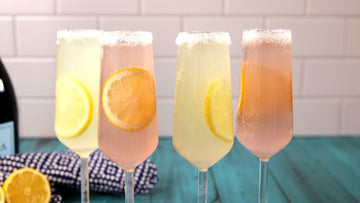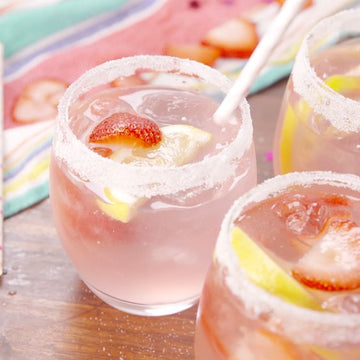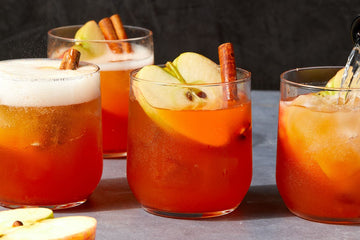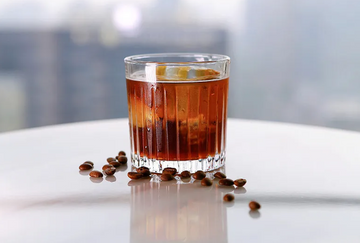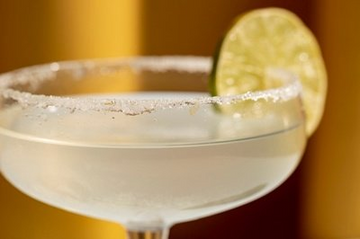
Make Homemade Tequila Step-by-Step
In this article, we are going to introduce how to make homemade tequila from scratch. We’ll start by covering the background of tequila and the origin of its ingredients. Then we’ll cover the basics of how to create tequila in its simplest form. Finally, we’ll go into more detail on the variety of different methods of aging for achieving a range of different flavors of tequila. All of the supplies you’ll need for distilling your own homemade tequila can be found in our shop.
Background on Tequila
Tequila, the national drink of Mexico, is known as the soul of Mexico. It first became known to the world when Mexico held the Olympic Games. This wine is a distilled wine made from agave.
Tequila is often used as a base for a variety of cocktails, including Tequila Sunrise, Matador, and Margarita Frost.
By the third century BC, the Indian civilization living in Central America had discovered the technology of fermentation and brewing. They used any available source of sugar in their lives to make wine, and the juicy agave plant, with its high sugar content, was a natural raw material for making wine. Pulque made from fermented agave juice.
Across the Atlantic, tequila retained its status as a pure fermented wine until Spanish conquistadors brought distillation to the New World. Then they tried to use distillation to improve Pulque's alcohol content, resulting in a distilled spirit made from agave. As this new product succeeded in replacing wine and became the object of great consumption by these colonists, it was given the name Mezcal wine.
Meal wine evolved into Mezcal/Tequila-- the name of the town where it was made -- after a long period of trial and improvement.
Base Ingredients & Materials
5.5 Gallons of Water
12 Cups of Blue Agave Nectar
2 Pounds of Raw Cane Sugar
Professional Tequila Active Dry Yeast
Fermentation Bucket Kit
Brew Pot
Heat Source
Thermometer
Long Spoon

Agave Nectar/Cane Sugar Wash Procedure
1.Place your brew pot on its heat source and pour in 4.5 gallons of water.
2.Heat water to 125 °F.
3.Stir in Raw Cane Sugar and Agave Nectar and stir with a long spoon until completely dissolved. (you may have to stir for a while to get your agave nectar to fully dissolve)
4.Once the Agave Nectar and Cane Sugar are fully dissolved pour in 1 gallon of cold water to bring the temperature of the wash down.
5.Check temperature and stir wash for 30 seconds every 5 minutes until the temperature cools to 80 °F. (This process can take several hours on its own, but can be sped up significantly with the use of an immersion cooler.
6.When the wash has cooled to 80 °F, add tequila active dry yeast.
7.Aerate the wash by dumping it back and forth between two separate containers for 5 minutes.
8.Pour the wash into your fermentation bucket. We carry complete fermentation kits for these as well as the materials to produce your own. It is important to have the bucket, cap, and air-lock. A spigot also makes for easier pouring.
9.Seal your fermentation bucket with the air-lock and store in a dark place around 75 °F – 80 °F.
Fermenting
Materials
1.Cheese Cloth and/or Easy Siphon
2.pH Meter (Advanced)
3.Citric Acid
4.Hydrometer
Fermentation
Your wash made using a mixture of agave nectar and raw cane sugar will ferment for 5-7 days and when ready, no longer taste sweet or emit gas from the air-lock. The yeast can fully convert all of the sugars to alcohol in the wash.
To test the ABV (alcohol by volume) of your fermentation, you can use a hydrometer. If you’ve never used a hydrometer before, check out our ‘How To Use a Hydrometer‘ guide.
Straining
Once fermentation has completed, we’ll need to completely remove any solid material that may have formed. The solid material left over can lead to headaches if left in the wash. Cheesecloth material is a great option for straining the wash before distillation as is an easy siphon. We carry both of these useful products in our online shop.
(Advanced) Some distillers will test the pH of their wash. The ideal pH is 4.5 to 5.0. Use citric acid to bring the pH down and calcium carbonate to bring it up.
Distilling
If you’ve made it this far, great job! So far you’ve done all of the work necessary to actually produce your fermented agave spirit or tequila wash. Your tequila wash will currently contain some undesirable contents and sediment that you’ll need to separate out and dispose of before distilling. You can utilize either cheesecloth or an easy siphon to remove this sediment. After you’ve removed the undesirable contents from your tequila wash, comes the distillation step of making your own homemade tequila. The process of distilling the fermented agave/cane sugar wash will produce a purer and more concentrated spirit (tequila). This step separates out all of the undesirable types alcohols such as acetaldehyde, acetone and methanol (which can cause blindness if consumed).
Collecting
Next, you’ll be collecting your tequila distillate. This is where all of your hard work up to this point will pay off! It’s definitely the most satisfying part of this entire distilling process. This step is a mixture of art and science. It takes an experienced distiller to get this process dialed in and exactly right. However, don’t let that deter you if you’re a tequila distilling newcomer. You know what they say, “practice makes perfect.” It’s no different here. After you run a few batches with your still, you’ll gain a familiarity with the whole process and be able to really improve by taking notes and making the necessary adjustments.
Aging
There are quite a few ways to go about aging your tequila. Aging breaks down into three basic windows of time, but there are roughly five different types of tequila. Each of these types has its own look and flavor profiles based on the amount of time the spirit is aged.
Conclusion
And there you have it! You have just made your own batch of homemade tequila. We hope this guide was helpful for you and you churned out a top-shelf spirit. Be sure to wash all of your equipment thoroughly to ensure that you can produce a high-quality product in the future. Disassemble your still and store it in a cool, dry location.
Thank you for visiting Hooloo Distill, your one-stop-shop for all of your distilling needs. Don’t forget to check out our shop for any supplies or equipment you may need for any future distillations. We hope you enjoyed learning how to make tequila using this guide.
Encounter Hooloo, Enjoy distillation life.
Let’s know what you thought of this guide by leaving a comment.

